Catbrier, Bullbrier, Sarsaparilla
Smilax rotundifolia
Many of us hate this prickly, aggressive vine that takes over entire large forest areas, preventing development of any other
plants and making the forest so inhospitable. Even deer avoid it, and if they can't, they overcome the dense extensive cover
by making huge leaps. In fact, the recent aggressive spread of catbrier has been linked by some ecologists with the over-population
of deer, who consume every other plant in the forest but brier, thus providing it an advantage over other plant species. Briers
are placed in their own family—a rather special group among monocots, where one can hardly name any woody vines other than
some of briers. The green woody stems of catbrier are fortified with stout prickles up to half-inch long. The stems branch
and climb to 40 ft high with the help of multiple tendrils.
Despite its aggressive spread—behavior of a typical invasive plant—catbrier is a native species, having intimate relationships
with other native organisms. The more brier is inhospitable for humans, the better protective cover it provides for birds
and small mammals. It serves the only host plant for at least one moth, turbulent phosphila, whose native range extends from
Massachusetts to Florida.
Flowers of brier appear in June, staminate and pistillate on different plants. Firm berries develop in the second half of
summer, changing color from green to blue in the fall, and staying on leafless branches throughout the winter. Both birds
and animals look for these berries in the late winter and early spring: cardinals, sparrows, deer, and rabbits. 'Flora of
North America' states that all brier species "are excellent wildlife food and are also browsed, or the rhizomes dug and eaten,
by domestic stock."
Catbrier has numerous human uses. The root is rich in starch and edible if cooked or ground in mealy powder, which then can
be used for cakes, puddings, or else added in soups. A beer resembling root beer—sarsaparilla, is also made from the roots.
Young tender shoots are edible raw or cooked—just like asparagus shoots. Medicinal uses include a tea made from leaves and
stems for the treatment of rheumatism and stomach problems; parched and powdered leaves for dressing on burns and scalds,
and more.
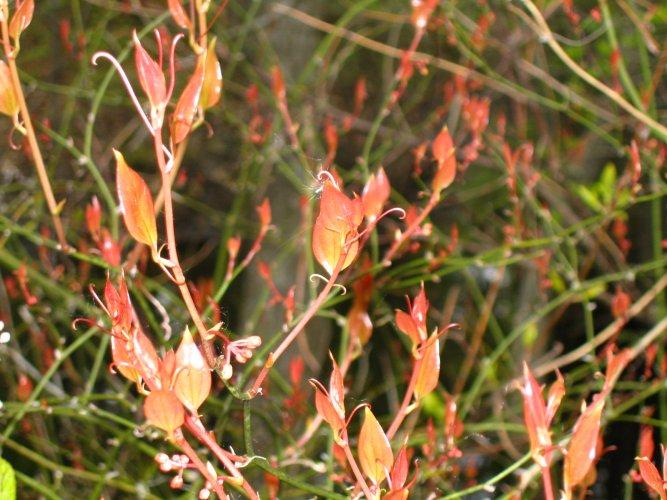
Tender and colorful new growth. May 17, Stony Brook Res., Boston
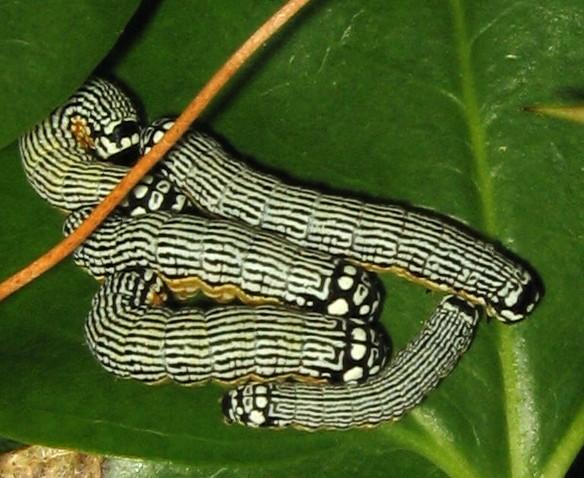
Turbulent phosphila (Phosphila turbulenta) moth larvae on their only host plant, brier. August 26, Stony Brook Reservation,
Boston
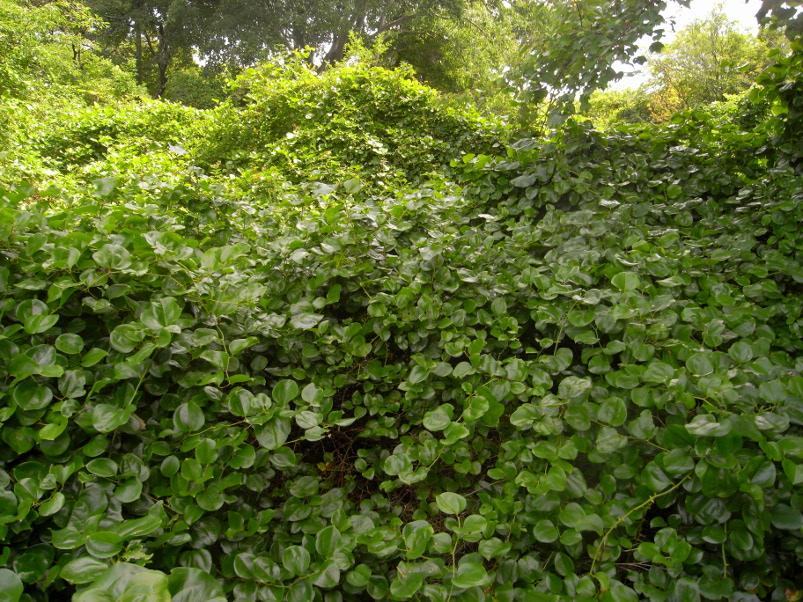
August 16, Plum Island, Rowley
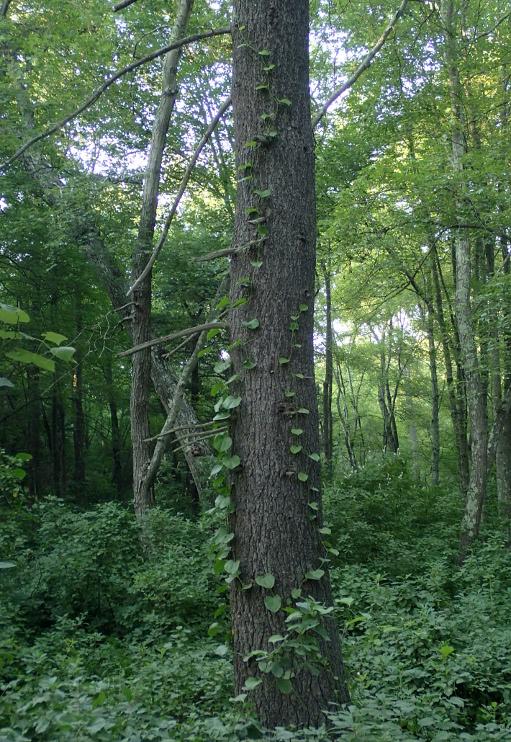
Climbing up a white pine. Ponkapoag Pond, Blue Hills Res., Canton
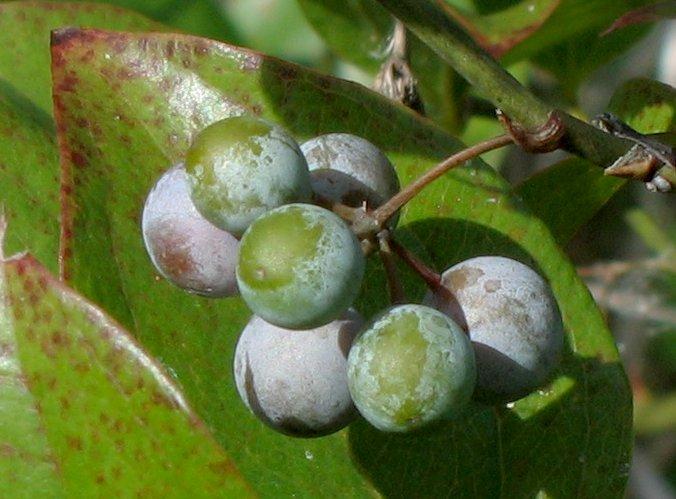
Ripening berries. September 14, Middlesex Fells Res., Medford
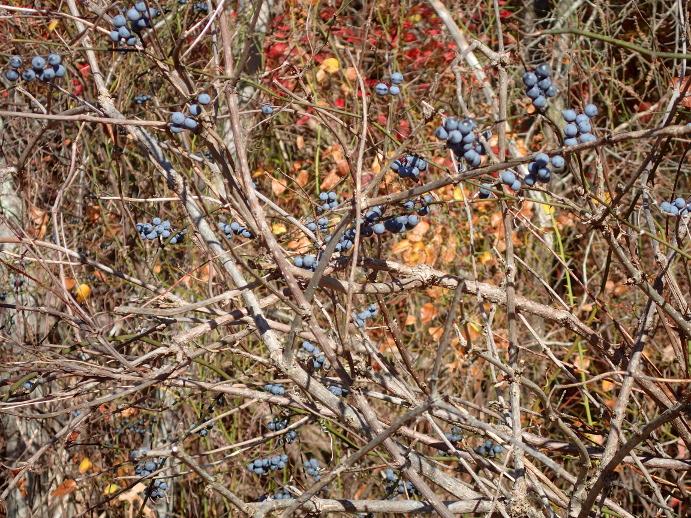
November 5, Blue Hills Res., Milton
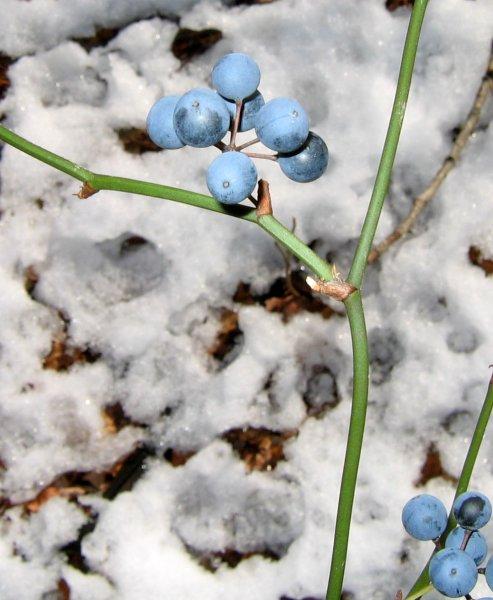
Persistent berries. January 28, Blue Hills Res., Milton